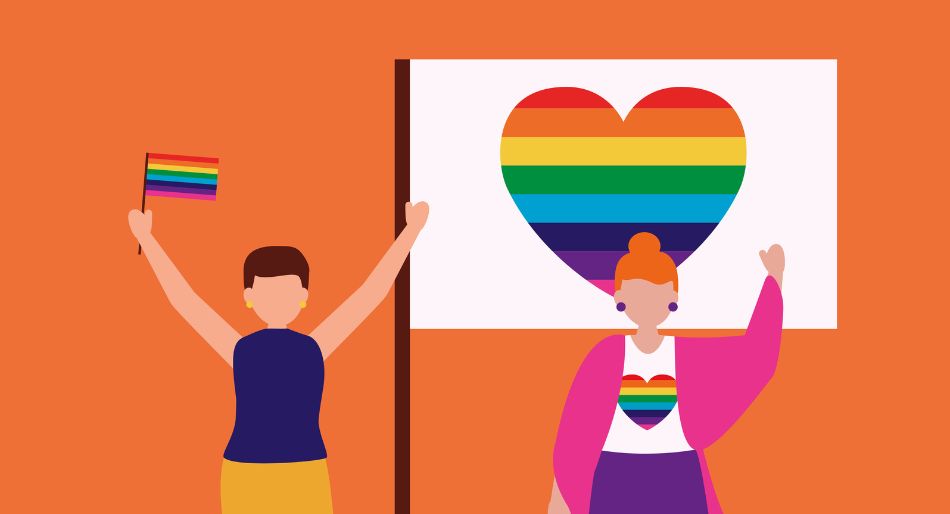
How can we make workplaces inclusive for the LGBTQIA+ community?

How can we make workplaces inclusive for the LGBTQIA+ community?
What does LGBTQIA+ stand for?
The term LGBTQIA+ is a widely-used acronym to describe the perse range of experiences of gender and sexuality that exist.
Lesbian
Gay
Bisexual
Transgender
Queer
Intersex
Asexual
+all other sexual, romantic, and gender persities
In the 1980s during the height of the AIDS epidemic in America, the term ‘queer’ was used as a slur against gay men. In a movement to fight this homophobia and the violence against gay men during this time, the LGBTQIA+ community came together to reclaim the word ‘queer’. Queer is now widely used by members of the LGBTQIA+ community to describe themselves. It can be understood as an umbrella term for LGBTQIA+ experiences, and also as a political statement against the oppression and discrimination of a cis-gendered heteronormative society.
Also read, How to react and be supportive when your child comes out as LGBTQIA+?
Exclusion and Inclusion
Queer people have existed across continents, cultures, and communities for millennia and the existence of queerness has not always been persecuted or dehumanized in the way that it currently is. There are many examples of gender and sexual persity in India before the times of British colonialism, but these were criminalized under British rule in Section 377 in the Indian Penal Code, which was only abolished in 2018. Given this historical context in which queer folk were criminalized, dehumanized, and experienced state- sanctioned violence for decades, it is unsurprising that local culture has become saturated with anti-queer norms and values. This has led to the systemic and systematic exclusion of queer people from public spaces (e.g. lack of gender-neutral toilets), professional advancement (e.g. requirements for identification cards that do not allow for non-binary gender identities), and personal life (e.g. cultural practices based on the gender binary, the lack of social acceptance of queerness).
Inclusivity in the Workplace
Many of the people we interact with on a daily basis are queer - our family members, peers and colleagues, and the people who use our services (e.g. patients in a hospital, customers in a shop, clients in a mental healthcare practice). Developing queer-friendly workplaces is likely to benefit not only staff but also the people who access these services, and hence undermine queerphobia in our local cultures and communities.
There are many simple ways to make our workplaces more inclusive for LGBTQIA+ folk. Although it is not possible to provide an exhaustive list, below are some suggestions for ways to make workplaces more inclusive for queer people:
- Providing gender neutral toilets
- Removing the need for gendered identification in accessing services e.g. removing the requirement for an Aadhar card when registering for a service
- Using gender neutral pronouns when addressing each other e.g. saying “them” instead of “she” or “he” when we don’t know the other person’s gender identity.
- Ensuring that we do not use gendered descriptions without checking e.g. using terms such as “partner” instead of “boyfriend/girlfriend” or “husband/wife” to reduce the heteronormative assumptions made
- Providing our pronouns in spoken and written format to demonstrate that we understand and welcome gender persity e.g. Navya (she/her)
- Being mindful of the language that we use which may be offensive towards queer folk. If we make a mistake, learning to apologize and move on – over-apologizing can shift the focus back to the person who is not queer, and hence is more damaging e.g. “I’m sorry I misgendered you there. She said…”
- Actively engaging in the processes of learning about the queer community so that we can reduce our ignorance and become active allies e.g. reading books by queer authors, watching TV shows and movies with good queer representation, reading articles/blogs by queer folk, watching videos featuring queer people, etc
- Ensuring that we do not ask unnecessarily personal questions about other people’s anatomy, gender identity, sexuality, or relationships. Ask yourself “how would I feel if a stranger asked me those questions? Would I feel comfortable to answer? Do I need to know this information to do my job well, or is it simply my personal curiosity?”
- Remaining open to receiving feedback if you have done something harmful to the queer community.
Also read,
What leads to low self-esteem in LGBTQIA+ youth and how can we help in boosting their self-esteem?
Why do so many LGBTQIA+ people suffer from mental health disorders? How can they overcome this?
If you know somebody who needs support at the workplace, they can get in touch with a therapist. How does bullying at the workplace affect mental health? Best ways to deal with it.
Image credits - Freepik

How Psychotherapy Helps in Late-Life Depression And Anxiety: A Path to Healing, Hope, And Healthy Aging
How Social Isolation Impacts Geriatric Mental Health? How to Reverse It?

